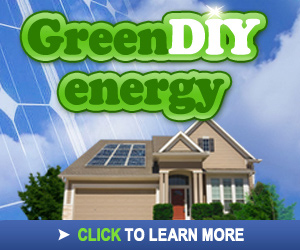Question by @ri@n@ + L3xY= por siempre @};-: What are some disadvantages and advantages of wind power/energy compared to other sources of energy?
Like geo-thermal energy,solar power
Best answer:
Answer by James
Advantages:
– There are no carbon equivalent (CO2e) greenhouse gas emissions once the wind turbine is built, although some are produced in manufacturing and installing the wind turbines.
– Wind has a lower cost per installed megawatt (MW) of generation capacity than some other types of renewable generation (e.g. solar, biomass).
– Wind is a mature and established generation technology, which is widely accepted by energy utility companies (compared with emerging technologies such as biomass gasification/cogeneration, which have more technical risk).
Disadvantages:
– Wind power still has a higher cost per installed MW of capacity than some conventional energy sources (e.g. coal, hydro).
– Power production is intermittent, depending on wind speed (this is also true of solar and marine renewable generation). This means that generation utilities have to either have backup generation (e.g. gas peaking plant), demand reduction systems (e.g. hot water ripple control) or hedging arrangements with other utilities in place to ensure they can deliver power to consumers and maintain the required power quality for the grid.
– Sites that make good wind farm locations (places with bare land and strong, steady wind flow) often are in remote places a long way from major electricity grid connection sites. This means there can be substantial added costs to connect generation sites to the grid.
Comparisons with Geothermal & Solar:
– Geothermal power production is a well established technology (over 100 years old) and can provide high levels of baseload (steady supply) power in large volumes.
– There are a limited number of sites suitable for geothermal power development, even in countries with plenty of geothermal activity (e.g. Italy, New Zealand, Philippines). Not all geothermal wells are suitable for commercial development because a combination of large reservoir, high heat and high pressure is needed to make power in most cases.
– There are companies developing more efficient geothermal technologies (e.g. Ormat) that allow smaller, lower heat or lower pressure wells to be developed.
– The direct heat from geothermal can also be used for industrial processes (e.g. woodpulp processing, timber drying and food processing).
– Geothermal power typically has large startup costs (tens to hundreds of millions of dollars) and for this reason is usually only undertaken by large energy utilities.
Solar:
– Solar has been used for around 30 years in commercial applications (e.g. backup power for telecommunications sites) but has only grown into the mass market in the last ten years or so.
– The cost of making photovoltaic (solar power) panels continues to drop with mass production and competition. Also, new technologies such as concentrating solar thermal and thin-film photovoltaic panels are increasing the choices available to users.
– The solar power market is splitting into two areas: utility solar plant (10MW+) and distributed solar, which includes small rooftop and community installations.
Know better? Leave your own answer in the comments!



No comment yet
1 ping
How Does Wind Power Work? | Solar Power says:
September 28, 2011 at 3:09 pm (UTC 0)
[…] Wind TurbineQ&A: How does wind power relate to life science? – HomePowerSavingHome wind turbineWhat are some disadvantages and advantages of wind power/energy compared to other sources of energy? window.google_analytics_uacct = […]